#caroline of brandenburg-ansbach
Explore tagged Tumblr posts
Text
I desire nothing so much as to throw myself at my Princess’s feet and promise her eternal devotion; you alone, Madam, can make me happy.
Prince Georg Augustus (later King George II) in a love letter to his fiancée Princess (later Queen) Caroline of Brandenburg-Ansbach
5 notes
·
View notes
Text


Queen consorts of England and Britain | [44/50] | Caroline of Brandenburg-Ansbach
Caroline was Queen consort of Great Britain and Ireland and Electress of Hanover from 1727 until 1737 as the wife of George II. She was born on 1 March 1683 as the daughter of John Frederick, Margrave of Brandenburg-Ansbach and Eleonore Erdmuthe of Saxe-Eisenach. When Caroline was three, her father died and she, along with her mother and younger brother returned to her mother’s homeland. Six years later, her mother was forced to marry the Elector of Saxony so the family moved to Dresden where they remained until her mother died four years later. After her mother’s death she and her brother returned to their birthplace and the court of their older half-brother, George Frederick. George Frederick was not interested in raising a young girl so he then sent her to live with Frederick, Elector of Brandenburg and his wife, Sophia Charlotte. Caroline received very little formal education in her youth, but thrived under Sophia Charlotte’s care and became a considerable intellectual. At one point, in the early 1700s, she was considered as a bride for Archduke Charles of Austria, but ultimately decided against it as she didn’t want to convert from Lutheranism to Catholicism. In June 1705, George Augustus of Hanover came to visit Caroline, hoping to marry her. Two months later, she arrived in Hanover and the two were married on 22 August 1705. Caroline and George had a happy and loving marriage with at least eight children. In 1714, Queen Anne of Great Britain died making Caroline’s father-in-law the new King and, therefore, she and her husband became Prince and Princess of Wales—making her the first Princess of Wales since Catherine of Aragon in the early 16th century. Because Caroline’s father-in-law had repudiated his wife prior to becoming King, Caroline became the highest-ranking woman in the kingdom. She and her husband made a great effort to learn the language and culture of England, in contrast to her father-in-law. Shortly after the birth of her son, George William, she and her husband were banished from court and had to leave their children behind. Eventually, the King relented and allowed Caroline unrestricted access to her children. In 1720, Caroline helped mediate a reconciliation between her husband and his father. In 1727, Caroline’s father-in-law died, making her husband King George II and her Queen consort. During her decade as consort, she had considerable influence over politics, even advocating clemency for the Jacobites and freedom of speech in Parliament. Caroline served as regent for her husband on two occasions. On 9 November 1737, Caroline fell ill and spent the next few weeks in agonizing pain until she finally died on 20 November.
12 notes
·
View notes
Photo

Caroline of Brandenburg-Ansbach (1 March 1683 – 20 November 1737) was Queen of Great Britain as the wife of King George II.
Her father, Margrave John Frederick of Brandenburg-Ansbach, belonged to a branch of the House of Hohenzollern and was the ruler of a small German state, the Principality of Ansbach. Caroline was orphaned at a young age and moved to the enlightened court of her guardians, King Frederick I and Queen Sophia Charlotte of Prussia. At the Prussian court, her previously limited education was widened, and she adopted the liberal outlook possessed by Sophia Charlotte, who became her good friend and whose views influenced Caroline all her life.
As a young woman, Caroline was much sought-after as a bride. After rejecting the suit of the nominal King of Spain, Archduke Charles of Austria, she married George Augustus, the third-in-line to the British throne and heir apparent to the Electorate of Hanover. They had eight children, seven of whom grew to adulthood.
Caroline moved permanently to Britain in 1714 when her husband became Prince of Wales. As Princess of Wales, she joined her husband in rallying political opposition to his father King George I. In 1717, her husband was expelled from court after a family row. Caroline came to be associated with Robert Walpole, an opposition politician who was a former government minister. Walpole rejoined the government in 1720, and Caroline's husband and King George I reconciled publicly, on Walpole's advice. Over the next few years, Walpole rose to become the leading minister.
Caroline became queen and electress consort upon her husband's accession in 1727. Her eldest son, Frederick, became Prince of Wales. He was a focus for the opposition, like his father before him, and Caroline's relationship with him was strained. As princess and as queen, Caroline was known for her political influence, which she exercised through and for Walpole. Her tenure included four regencies during her husband's stays in Hanover, and she is credited with strengthening the House of Hanover's place in Britain during a period of political instability. Caroline was widely mourned by her political allies following her death in 1737, as well as by the King, who refused to remarry.
#Caroline of Brandenburg-Ansbach#House Brandenburg-Ansbach#XVII century#XVIII century#people#portrait#paintings#art#arte
15 notes
·
View notes
Text


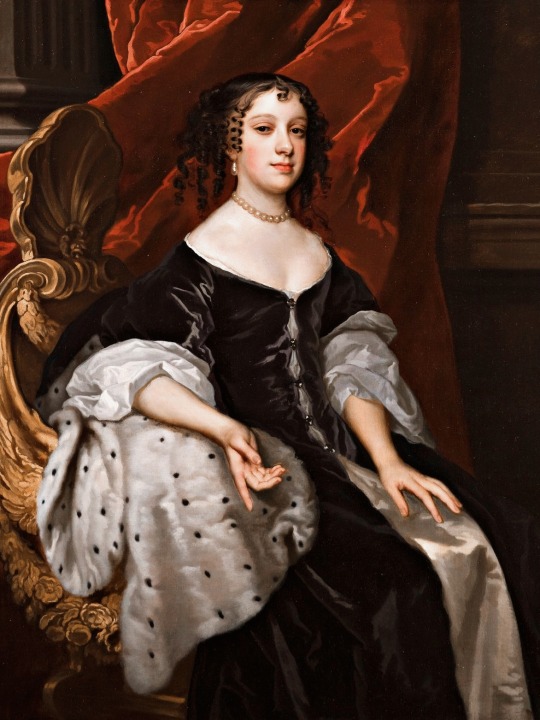
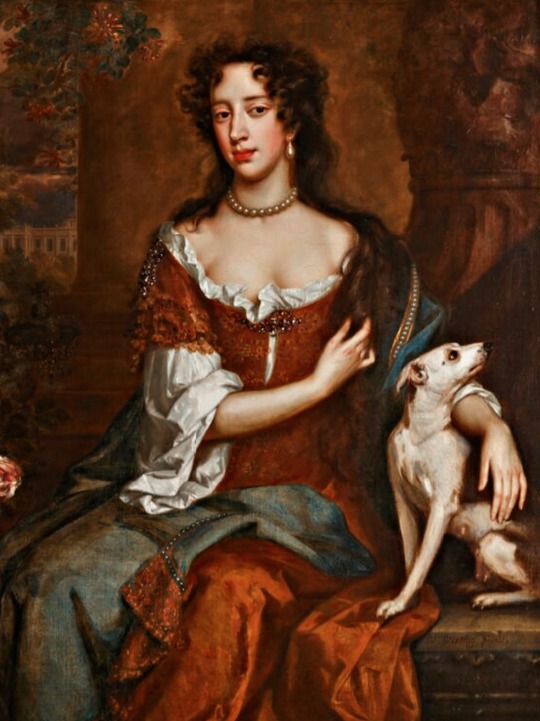
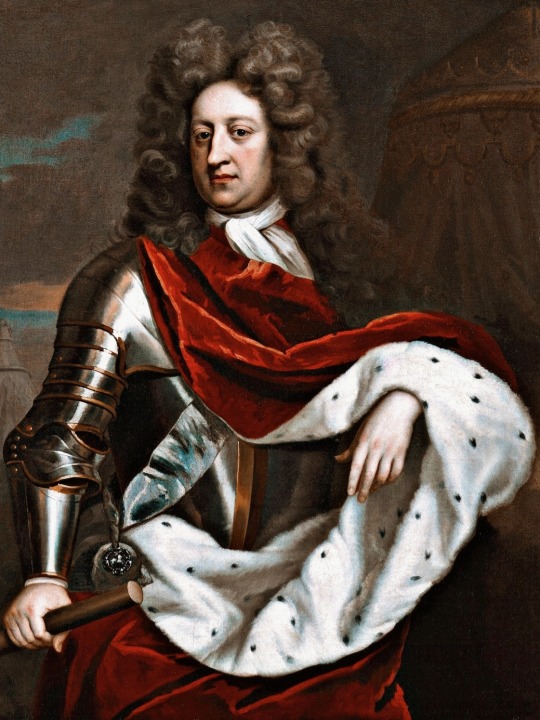
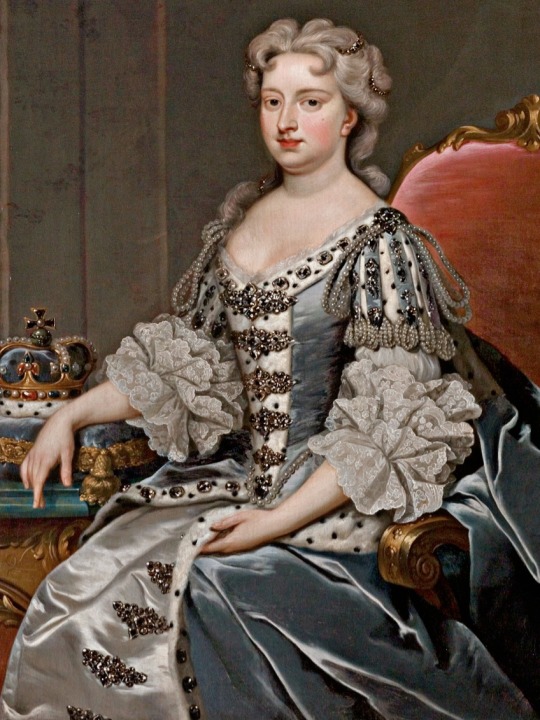
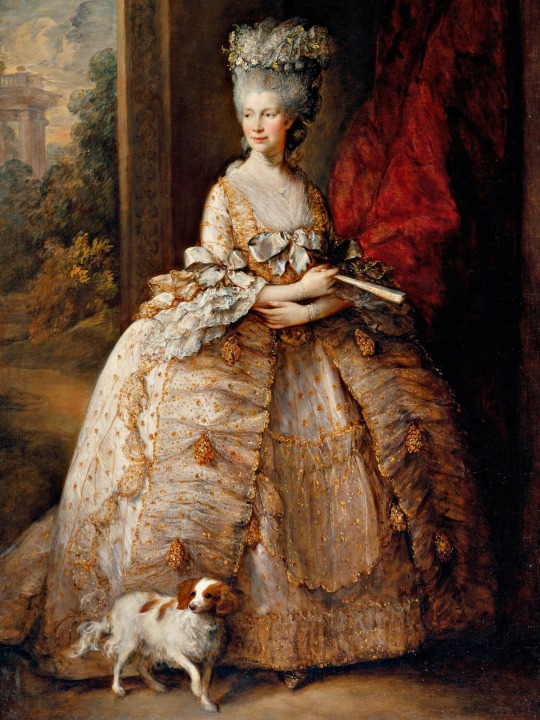
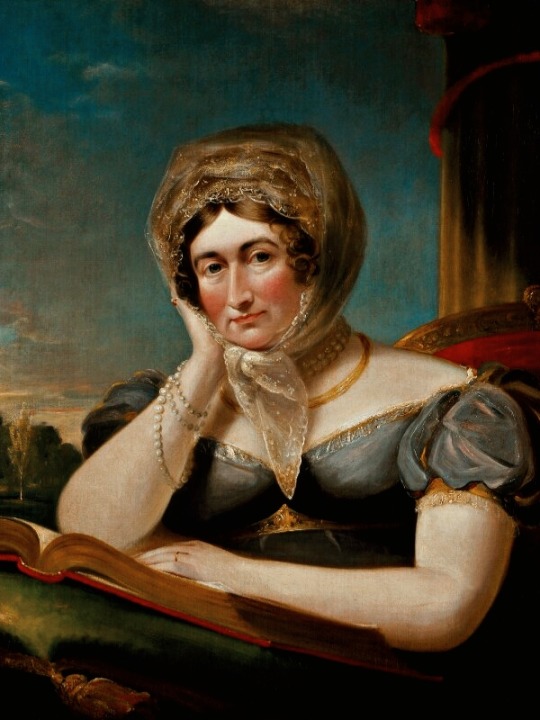
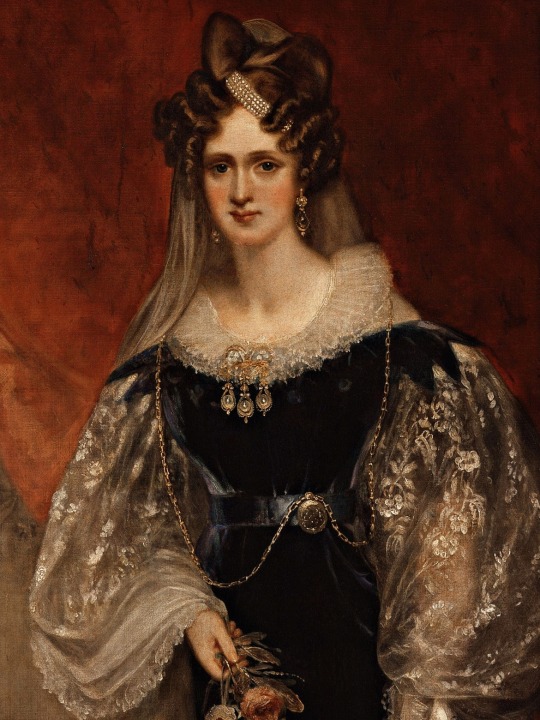
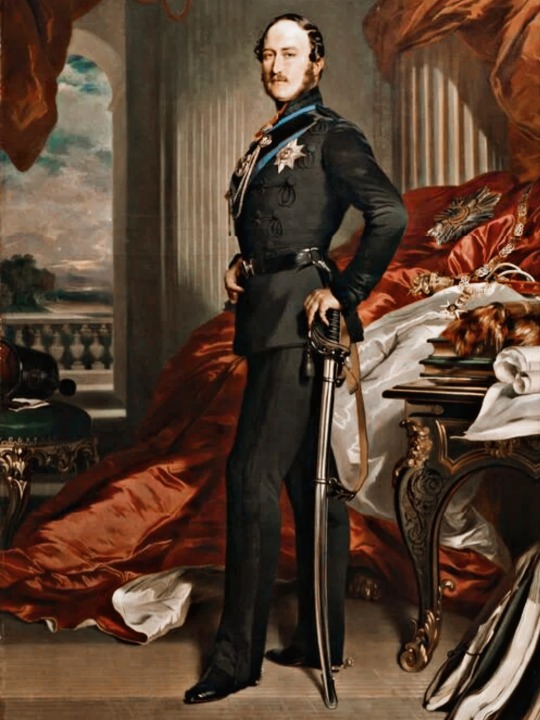
CONSORTS OF ENGLAND SINCE THE NORMAN INVASION (4/5) ♚
Anne of Denmark (March 1603 - March 1619)
Henrietta Maria of France (June 1625 - January 1649)
Catherine of Braganza (May 1662 - February 1685)
Mary of Modena (February 1685 - December 1688)
Prince George of Denmark (March 1702 - October 1708)
Princess Caroline of Brandenburg-Ansbach (June 1727 - November 1737)
Princess Charlotte of Mecklenburg-Strelitz (September 1761 - November 1818)
Princess Caroline of Brunswick-Wolfenbüttel (January 1820 - August 1821)
Princess Adelaide of Saxe-Meiningen (June 1830 - June 1837)
Prince Albert of Saxe-Coburg and Gotha (February 1840 - December 1861)
#historyedit#history#consorts of england and britiain.#my photoset.#historical royals#anne of denmark#henrietta maria#henrietta maria of france#catherine of braganza#mary of modena#george of denmark#princess caroline of brandenburg ansbach#queen charlotte#princess charlotte of Mecklenburg strelitz#princess caroline of brunswick wolfenbüttel#princess adelaide of saxe meiningen#english history#history edit#queen consort#prince consort#prince albert#queen victoria#victoria and albert#young victoria#british royals#royals#royal#queen adelaide#queen anne#queen mary
67 notes
·
View notes
Photo

Caroline of Ansbach, Queen of Great Britain (1 March 1683 - 20 November 1737)
#caroline of ansbach#wilhelmina charlotte caroline of brandenburg-ansbach#queen of great britain#daughter of john frederick margrave of brandenburg-ansbach#wife of george ii of great britain#history#women in history#17th century#18th century#art
21 notes
·
View notes
Text
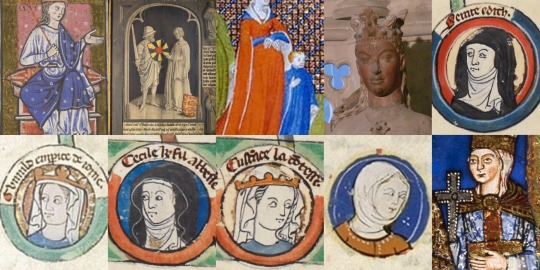
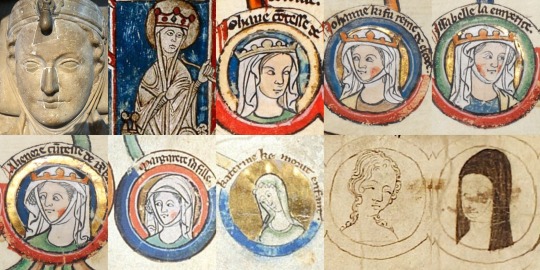
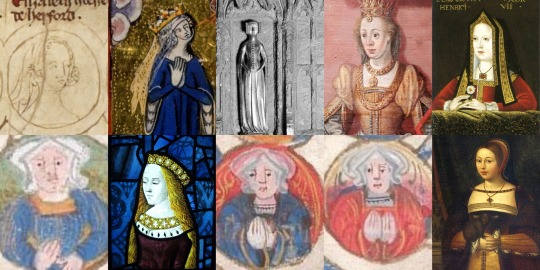

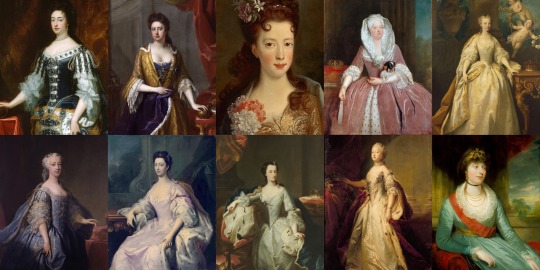
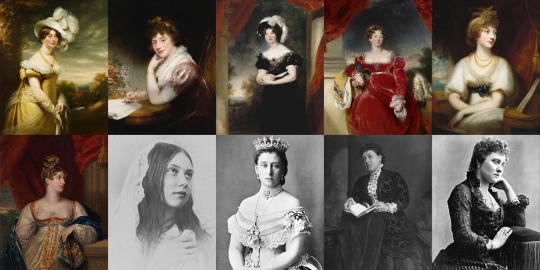
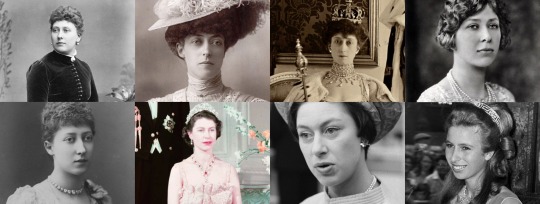
Every English Princess Ever
You’ve heard of Every Queen of England Ever, now I present to you another product that proves I have way too much time on my hands! If you notice any mistakes, please point them out to me kindly. I am sorry I do not know everything, but there is no reason to be rude. 😁
Æthelswith - Daughter of Æthelwulf and his first wife Osburh. She married King Burgred of Mercia in 853, making her the Queen of Mercia.
Æthelflæd - Daughter of Alfred the Great and Ealhswith. When her husband Æthelred, Lord of Mercians died in 911, she became Lady of the Mercians, and reigned for seven years.
Æthelgifu - Daughter of Alfred the Great and Ealhswith. When Alfred founded Shaftesbury Abbey in 890, he made her its first abbess.
Ælfthryth - Daughter of Alfred the Great and Ealhswith. Her marriage to Baldwin II, Count of Flanders made her Countess of Flanders.
Eadgifu - Daughter of Edward the Elder and his second wife Ælfflæd. She was Queen of West Francia by her marriage to Charles III.
Eadhild - Daughter of Edward the Elder and his second wife Ælfflæd. She married Hugh, Duke of the Franks in 937.
Eadgyth - Daughter of Edward the Elder and his second wife Ælfflæd. She married Otto in 930, who became Otto I, King of Germany in 936, also making her Queen of Germany.
Eadburh - Daughter of Edward the Elder and his third wife Eadgifu. She lived her life as a nun.
Godgifu - Daughter of Æthelred the Unready and his second wife Emma of Normandy. Her marriage to Eustace II, Count of Boulogne made her Countess of Boulogne.
Gunhilda - Daughter of Cnut the Great and his second wife Emma of Normandy. She became Queen of Germany when she married Henry III.
Gytha - Daughter of Harold II and Edith Swanneck. She was Princess of Rus from her marriage to Vladimir II Monomakh.
Adeliza - Daughter of William the Conqueror and Matilda of Flanders.
Cecilia - Daughter of William the Conqueror and Matilda of Flanders. She was entered into the Abbey of the Holy Trinity of Caen at a young age, and became Abbess in 1112.
Constance - Daughter of William the Conqueror and Matilda of Flanders. She became Duchess of Brittany when she married Alan IV, Duke of Brittany.
Adela - Daughter of William the Conqueror and Matilda of Flanders. She was Countess of Blois by her marriage to Stephen, Count of Blois, and was regent of Blois two times.
Empress Matilda - Daughter of Henry I and Matilda of Scotland. She became Holy Roman Empress in 1114, and acted as Queen of England from 1141 to 1148, but was disputed.
Marie I - Daughter of Stephen and Matilda I, Countess of Boulogne. When her brother William I, Count of Boulogne died childless in 1159, Marie succeeded him as the Countess of Boulogne.
Matilda - Daughter of Henry II and Eleanor of Aquitaine. She was Duchess of Saxony and Bavaria from her marriage to Henry the Lion.
Eleanor - Daughter of Henry II and Eleanor of Aquitaine. She became Queen of Castile and Toledo when she married Alfonso VIII.
Joan - Daughter of Henry II and Eleanor of Aquitaine. She was Queen of Sicily by her marriage to William II until his death in 1189, and became Countess of Toulouse when she married Raymond VI in 1196.
Joan - Daughter of John and Isabella of Angoulême. She was Queen of Scotland by her marriage to Alexander II.
Isabella - Daughter of John and Isabella of Angoulême. She was Holy Roman Empress and Queen of Sicily and Germany by her marriage to Frederick II.
Eleanor - Daughter of John and Isabella of Angoulême. She was Countess of Pembroke by her first marriage to William Marshal, 2nd Earl of Pembroke, and Countess of Leicester by her second marriage to Simon de Montfort, 6th Earl of Leicester.
Margaret - Daughter of Henry III and Eleanor of Provence. She was Queen of Scotland by her marriage to Alexander III.
Beatrice - Daughter of Henry III and Eleanor of Provence. (Her wikipedia says she was Countess of Richmond, which I’m not sure is true or not. Her husband was the Duke of Brittany, but it is possible she somehow inherited the title in her own right).
Katherine - Daughter of Henry III and Eleanor of Provence. She passed away at the age of three.
Eleanor - Daughter of Edward I and Eleanor of Castile. She was Countess of Bar by her marriage to Henry III, Count of Bar.
Joan of Acre - Daughter of Edward I and Eleanor of Castile. She was Countess of Hertford and Gloucester by her first marriage to Gilbert de Clare, 7th Earl of Gloucester and 6th Earl of Hertford.
Margaret - Daughter of Edward I and Eleanor of Castile. She was Duchess of Brabant, Lothier and Limburg by her marriage to John II.
Mary of Woodstock - Daughter of Edward I and Eleanor of Castile. She was a nun at Amesbury Priory.
Elizabeth of Rhuddlan - Daughter of Edward I and Eleanor of Castile. She was Countess of Holland by her first marriage to John I, and Countess of Hereford by her second marriage to Humphrey de Bohun, 4th Earl of Hereford.
Eleanor of Woodstock - Daughter of Edward II and Isabella of France. She was Duchess of Guelders by her marriage to Reginald II, and was regent of Guelders while her son was still young.
Joan of the Tower - Daughter of Edward II and Isabella of France. She got her name from being born in the Tower of London. Joan was Queen of Scotland by her marriage to David II.
Isabella - Daughter of Edward III and Philippa of Hainault. She was Countess of Bedford and Lady of Coucy by her marriage to Enguerrand VIII, and was made a Lady of the Garter in 1376.
Joan - Daughter of Edward III and Philippa of Hainault. She died during the Black Death at the age of fourteen.
Mary of Waltham - Daughter of Edward III and Philippa of Hainault. She was Duchess of Brittany by her marriage to John IV, Duke of Brittany, and was made a Lady of the Garter in 1378. She died young at the age of sixteen.
Margaret of Windsor - Daughter of Edward III and Philippa of Hainault. She was Countess of Pembroke by her marriage to John Hastings, 2nd Earl of Pembroke. Margaret died young at the age of fifteen.
Blanche of Lancaster - Daughter of Henry IV and Mary de Bohun. She was Electress Palatine by her marriage to Louis III, Electress Palatine.
Philippa of Lancaster - Daughter of Henry IV and Mary de Bohun. She was Queen of Denmark, Sweden and Norway by her marriage to Eric III, VIII & XIII.
Elizabeth of York - Daughter of Edward IV and Elizabeth Woodville. She was Queen of England by her marriage to Henry VII.
Mary of York - Daughter of Edward IV and Elizabeth Woodville. She died at the age of fourteen.
Cecily of York - Daughter of Edward IV and Elizabeth Woodville. She was First Lady of the Bedchamber to her sister, Elizabeth of York, from 1485 to 1487. Cecily was Viscountess Welles by her marriage to John Welles, 1st Viscount Welles.
Margaret of York - Daughter of Edward IV and Elizabeth Woodville. She died at just eight months old.
Anne of York - Daughter of Edward IV and Elizabeth Woodville. She was First Lady of the Bedchamber to her sister, Elizabeth of York, from 1487 to 1494.
Catherine of York - Daughter of Edward IV and Elizabeth Woodville. She was Countess of Devon by her marriage to William Courtenay, 1st Earl of Devon.
Bridget of York - Daughter of Edward IV and Elizabeth Woodville. She was a nun at Dartford Priory.
Margaret Tudor - Daughter of Henry VII and Elizabeth of York. She was Queen of Scotland by her marriage to James IV of Scotland.
Elizabeth Tudor - Daughter of Henry VII and Elizabeth of York. She died at the age of three.
Mary Tudor - Daughter of Henry VII and Elizabeth of York. She was Queen of France by her first marriage to Louis XII of France, and Duchess of Suffolk by her second marriage to Charles Brandon, 1st Duke of Suffolk.
Mary I - Daughter of Henry VIII and Catherine of Aragon. She was Queen of England from 1553 to 1558, and Queen of Spain by her marriage to Philip II of Spain.
Elizabeth I - Daughter of Henry VIII and Anne Boleyn. She was Queen of England from 1558 to 1603.
Elizabeth Stuart - Daughter of James VI & I and Anne of Denmark. She was Electress Palatine and Queen of Bohemia by her marriage to Frederick V.
Margaret Stuart - Daughter of James VI & I and Anne of Denmark. She died at the age of one year old.
Mary Stuart - Daughter of James VI & I and Anne of Denmark. She died at the age of two years old.
Sophia Stuart - Daughter of James VI & I and Anne of Denmark. She lived for just one day.
Mary - Daughter of Charles I and Henrietta Maria. She was Princess of Orange and Countess of Nassau by her marriage to William II, Prince of Orange.
Elizabeth Stuart - Daughter of Charles I and Henrietta Maria. She died at the age of fourteen.
Anne Stuart - Daughter of Charles I and Henrietta Maria. She died at the age of three.
Henrietta - Daughter of Charles I and Henrietta Maria. She was Duchess of Orléans by her marriage to Philippe I, Duke of Orléans.
Mary II - Daughter of James II & VII and Anne Hyde. She was Queen of England from 1689 to 1694.
Anne - Daughter of James II & VII and Anne Hyde. She was Queen of England and Great Britain from 1702 to 1714.
Louisa Maria Stuart - Daughter of James II & VII and Mary of Modena. She died at the age of nineteen.
Sophia Dorothea of Hanover - Daughter of George I and Sophia Dorothea of Celle. She was Queen of Prussia and Electress Brandenburg by her marriage to Frederick William I of Prussia.
Anne - Daughter of George II and Caroline of Ansbach. She was Princess of Orange by her marriage to William IV, Prince of Orange.
Amelia of Great Britain - Daughter of George II and Caroline of Ansbach.
Caroline Elizabeth of Great Britain - Daughter of George II and Caroline of Ansbach.
Mary of Great Britain - Daughter of George II and Caroline of Ansbach. She was Landgravine of Hesse-Kassel by her marriage to Frederick II, Landgrave of Hesse-Kassel.
Louise of Great Britain - Daughter of George II and Caroline of Ansbach. She was Queen of Denmark and Norway by her marriage to Frederick V of Denmark.
Charlotte - Daughter of George III and Charlotte of Mecklenburg-Strelitz. She was Duchess, Electress and Queen of Württemberg by her marriage to Frederick I of Württemberg.
Augusta Sophia - Daughter of George III and Charlotte of Mecklenburg-Strelitz.
Elizabeth - Daughter of George III and Charlotte of Mecklenburg-Strelitz. She was Landgravine of Hesse-Homburg by her marriage to Frederick VI, Landgrave of Hesse-Homburg.
Mary - Daughter of George III and Charlotte of Mecklenburg-Strelitz. She was Duchess of Gloucester and Edinburgh by her marriage to Prince William Frederick, Duke of Gloucester and Edinburgh.
Sophia - Daughter of George III and Charlotte of Mecklenburg-Strelitz.
Amelia - Daughter of George III and Charlotte of Mecklenburg-Strelitz.
Charlotte of Wales - Daughter of George IV and Caroline of Brunswick. She was their only child, and died before both of them.
Charlotte Augusta Louisa of Clarence - Daughter of William IV and Adelaide of Saxe-Meiningen. She died shortly after birth.
Elizabeth Georgiana Adelaide of Clarence - Daughter of William IV and Adelaide of Saxe-Meiningen. She died shortly after birth.
Victoria - Daughter of Queen Victoria and Prince Albert. She was German Empress and Queen of Prussia by her marriage to Frederick III, German Emperor.
Alice - Daughter of Queen Victoria and Prince Albert. She was Grand Duchess of Hesse and Rhine by her marriage to Louis IV, Grand Duke of Hesse.
Helena - Daughter of Queen Victoria and Prince Albert. She was Princess of Schleswig-Holstein by her marriage to Prince Christian of Schleswig-Holstein.
Louise - Daughter of Queen Victoria and Prince Albert. She was Duchess of Argyll and Viceregal of Canada by her marriage to John Campbell, 9th Duke of Argyll.
Beatrice - Daughter of Queen Victoria and Prince Albert. She was Princess of Battenberg by her marriage to Prince Henry of Battenberg.
Louise of Wales - Daughter of Edward VII and Alexandra of Denmark. She was Duchess of Fife by her marriage to Alexander Duff, 1st Duke of Fife.
Victoria of Wales - Daughter of Edward VII and Alexandra of Denmark.
Maud of Wales - Daughter of Edward VII and Alexandra of Denmark. She was Queen of Norway by her marriage to Haakon VII of Norway.
Mary of York - Daughter of George V and Mary of Teck. She was Countess of Harewood by her marriage to Henry Lascelles, 6th Earl of Harewood.
Elizabeth II - Daughter of George VI and Elizabeth Bowes-Lyon. She is Queen of the UK from 1952 to present.
Margaret Rose of York - Daughter of George VI and Elizabeth Bowes-Lyon. She was Countess of Snowdon.
Anne of Edinburgh - Daughter of Elizabeth II and Prince Philip.
#british history#historical women#empress matilda#elizabeth of york#margaret tudor#mary i#elizabeth i#british royal family
159 notes
·
View notes
Text

Princess Frederica Caroline of Saxe-Coburg-Saalfeld, Margravine of Brandenburg-Ansbach and Bayreuth ( 1735-1791) German School, 18th century
50 notes
·
View notes
Photo
OMG YES
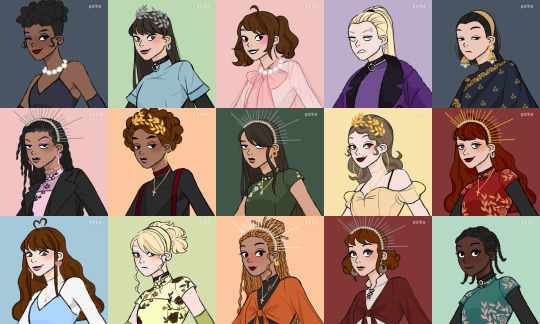


Mmmm, every English queen, but Sixed
#six the musical#matilda of flanders matilda of scotland adeliza of louvain empress matilda matilda of boulogne#eleanor of aquitaine berengaria of navarre isabelle of?angoul?me?eleanor of provenceeleanor of?castille#margaret of france isabella of france?philippa of hainault anne of bohemia isabella of valois#joan of navarre catherine of valois margaret of anjou elizabeth woodville anne neville#margaret?beaufort elizabeth of york catherine of aragon anne boleyn jane seymour#anna of cleves katherine howard catherine parr jane grey mary i#elizabeth i mary queen of scots anne of denmark henrietta maria of france catherine of braganza#mary of modena mary ii queen anne caroline of brandenburg-ansbach charlotte of mecklenberg-strelitz
60 notes
·
View notes
Note
top 5 historical queens?
Ooo, exciting! *rubs hands in anticipation*
(I'm going by who I most enjoy researching and learning fun facts about at present, and definitely not arguing that they were pinnacles of justice and fair wise rule and whatnot)
1. Presently tied between Elizabeth of Russia and Catherine the Great. Two utterly fascinating women who each rose to power via coup and brought about remarkable changes in Russia, for better and worse.
2. Caroline of Brandenburg-Ansbach, wife of George II of Great Britain; probably one of the most educated queens Britain ever had, and adored by pretty much everyone, even the opposition to the political party that she supported. She was regent four times during her husband's reign, and supported clemency for the Jacobites (supporters of the rival Stuart claim to the throne), freedom of the press, and freedom of speech in Parliament.
3. Queen Christina of Sweden, whose official title was actually 'king', one of the most learned women of the 17th century, who attracted many scientists to Stockholm, wanting to make it 'the Athens of the north'. Then she scandalised everyone by refusing to marry, nearly bankrupted her country and took a nose dive in popularity, abdicated, travelled through Europe, converted to Roman Catholicism and finally wound up in Rome, where she spent most of the rest of her very eventful life.
4. Isabella of Portugal, the wife of Charles V, Holy Roman Emperor; as such, Queen of Spain and Germany, and Lady of the Netherlands, Holy Roman Empress and Queen of Italy (phew). She was the regent of Spain while her husband constantly travelled around Europe, and they sustained a passionate and loving marriage even when separated for long periods of time. She also kept Spain independent of imperial politics and economically healthy.
5. Lakshmibai, the Rani of Jhansi, one of the leading figures of the Indian Rebellion of 1857. While there's debate about whether she was responsible for some of the massacres that began the rebellion, or when she chose to make a play for independance, she fought fiercely to defend her state of Jhansi and her adopted son's inheritance from being taken and divided by other powers.
Some honourable mentions:
Eleanor of Aquitaine, naturally.
Margaret of Anjou: she founded my dad's college!
Grace/Gráinne O'Malley, the head of the Ó Máille dynasty in the west of Ireland in the sixteenth century, who when her sons and half-brother were taken captive by the English went to London to present a petition to Elizabeth I. They conversed in Latin because Grace couldn't speak English and Elizabeth couldn't speak Irish!
9 notes
·
View notes
Text
Master Post - Members who married into a royal or noble house
Disclaimer: If a person married someone from the same house as they were born into, I have not listed them in this list. Please look at the list sorted by birth for them. Houses that rule(d)/reside(d) in other countries but originally came from German and/or Austrian territories and/or are generally regarded as belonging to this cultural room are listed among the German & Austrian Houses.
German & Austrian Houses
House of Babenberg
Princess Eudokia Laskarina of Nicaea, The Hereditary Duchess of Austria
Princess Theodora Angelina of Byzantium, The Duchess of Austria & Styria
Princess Theodora Komnene of Byzantium, The Duchess of Bavaria & Austria
House of Castell
Baroness Ottilie of Faber, Countess of Faber-Castell
House of Coburg (Cadet branch of the House of Wettin)
Princess Louise of Saxe-Gotha-Altenburg, The Duchess of Saxe-Coburg-Saalfeld (1st marriage)
Princess Mary of Teck, The Queen of the United Kingdom & British Dominions, The Empress of India
Queen Victoria of the United Kingdom (wife of Prince Albert of Saxe-Coburg and Gotha)
House of Faber
Ottilie Richter, Baroness of Faber
House of Habsburg (incl. Habsburg-Lorraine)
Anna Plochl, Countess of Meran
Princess Charlotte of Belgium, The Empress of Mexico, Archduchess of Austria
Infanta Eleanor of Portugal, Holy Roman Empress, The Archduchess of Austria
Eleonore Magdalene of Neuburg, Holy Roman Empress
Elisabeth in Bavaria, The Empress of Austria
Princess Elisabeth Christine of Brunswick-Wolfenbüttel, Holy Roman Empress
Queen Joanna of Castile, León and Aragon (Consort of Philip the Handsome, Archduke of Austria and The Duke of Burgundy)
Princess Maria Anna of Bavaria, The Archduchess of Inner Austria-Styria
Maria Beatrice d’Este, The Duchess of Massa & Carrara, Archduchess of Austria
Mary, The Duchess of Burgundy
Princess Sophie of Bavaria, Archduchess of Austria
Countess Sophie Chotek of Chotkowa and Wognin, The Duchess of Hohenberg
Princess Stéphanie of Belgium, The Crown Princess of Austria, Hungary and Bohemia
House of Hanover (Cadet branch of the House of Welf)
Princess Adelaide (Adelheid) of Saxe-Meiningen, The Queen of the United Kingdom and Hanover
Princess Caroline of Ansbach, The Queen of Great Britain
Princess Caroline of Brunswick-Wolfenbüttel, The Queen of the United Kingdom and Hanover
Princess Charlotte of Mecklenburg-Strelitz, The Queen of Great Britain, Ireland and Hanover
Frederica (Friederike) of Mecklenburg-Strelitz, The Queen of Hanover, The Duchess of Cumberland and Teviotdale (3rd marriage)
Princess Victoria of Saxe-Coburg-Saalfeld, The Duchess of Kent (2nd marriage)
House of Hesse
Princess Alice of Great Britain and Ireland, The Grand Duchess of Hesse and by Rhine
Princess Cecilie of Greece and Denmark, The Hereditary Grand Duchess of Hesse and by Rhine
Princess Christina of Saxony, The Landgravine of Hesse
House of Hohenlohe-Langenburg
Princess Feodora of Leininigen, The Princess of Hohenlohe-Langenburg
House of Hohenstaufen
Irene of Byzantium, The Queen of the Germans, The Duchess of Swabia
House of Hohenzollern
Princess Augusta of Saxe-Weimar-Eisenach, The German Empress
Princess Augusta Victoria (Auguste Viktoria) of Schleswig-Holstein, The German Empress
Elisabeth Christine of Brunswick-Wolfenbüttel-Bevern, The Queen of Prussia
Princess Elisabeth of Wied, The Queen & Princess of Romania
Princess Elisabeth Ludovika of Bavaria, The Queen of Prussia
Frederica (Friederike) of Mecklenburg-Strelitz, Princess Louis Charles of Prussia (1st marriage)
Princess Hermine Reuß, “German Empress”
Jadwiga Jagiellon, Electress of Brandenburg
Louise of Mecklenburg-Strelitz, The Queen of Prussia
Princess Sophia Dorothea of Hanover, The Queen in Prussia
Princess Victoria of Great Britain and Ireland, Princess Royal, The German Empress
House of La Marck
Jeanne d’Albret, The Duchess of Jülich-Cleves-Berg
House of Limburg-Luxemburg
Elizabeth of Pomerania, Holy Roman Empress
House of Nassau
Princess Sophie of Württemberg, The Queen of the Netherlands
House of Oldenburg
Princess Adelheid of Hohenlohe-Langenburg, The Duchess of Schleswig-Holstein
Princess Juliane of Brunswick-Wolfenbüttel-Bevern, The Queen of Denmark and Norway
House of Supplinburg
Richenza of Northeim, Holy Roman Empress
House of Thurn and Taxis
Helene in Bavaria, The Hereditary Princess of Thurn and Taxis
House of Welf (without the British Hanover branch)
Princess Elisabeth of Brandenburg, The Duchess of Brunswick-Calenberg-Göttingen
Elisabeth of Mecklenburg-Schwerin, Princess of Brunswick-Lüneburg aka Grand Duchess Anna Leopoldovna of Russia
House of Wettin (without the Coburg branch)
Princess Amalie Auguste of Bavaria, The Queen of Saxony
Princess Feodora of Hohenlohe-Langenburg, The Duchess of Saxe-Meiningen
Princess Maria Anna of Bavaria, The Queen of Saxony
Sibylle of Cleves, The Electress of Saxony
House of Wittelsbach
Elizabeth Stuart, The Queen of Bohemia & Electress Palatine
Kunigunde of Austria, The Duchess of Bavaria-Munich
Princess Louise d’Orléans, Princess of Bavaria
Archduchess Maria Antonia of Austria, The Electress of Bavaria
Princess Marie of Prussia, The Queen of Bavaria
The House of Württemberg
Princess Antoinette of Saxe-Coburg-Saalfeld, Duchess of Württemberg
Princess Marie Auguste of Thurn and Taxis, The Duchess of Württemberg
The Ottonians
Adelaide of Burgundy, Holy Roman Empress, Queen of Italy
Theophanu, Holy Roman Empress
Foreign Houses
House of Bourbon
Jeanne d’Albret, The Queen of Navarre and The Duchess of Vendôme
Archduchess Maria Antonia “Marie Antoinette” of Austria, The Queen of France
House of Braganza
Archduchess Maria Leopoldina, The Empress of Brazil, The Queen of Portugal and the Algarves
Byzantine Imperial Family
Konstanze “Anna” of Hohenstaufen, The Empress of Nicaea
House of Ivrea
Elisabeth “Beatrix” of Swabia, The Queen of Castile, León & Galicia
House of Lorraine
Archduchess Maria Anna of Austria, Princess of Lorraine and Bar
The Archduchess Maria Theresa (Maria Theresia) of Austria, Holy Roman Empress (marriage formed new House of Habsburg-Lorraine)
House of Medici
Archduchess Johanna of Austria, The Grand Duchess of Tuscany
House of Radziwiłł
Princess Luise of Prussia, Princess Radziwiłł
House of Romanov (incl. Romanov-Holstein-Gottrop)
Princess Alix of Hesse and by Rhine aka Empress Alexandra Feodorovna of Russia
Princess Elisabeth of Hesse and by Rhine, Grand Duchess Elizabeth Feodorovna of Russia
Princess Sophie of Anhalt-Zerbst, The Empress Regnant of Russia aka Catherine the Great
House of Tudor
Anne of Cleves, The Queen of England
House of Valois
Elisabeth (Isabeau) of Bavaria, The Queen of France
House of Vasa
Princess Maria Eleonora of Brandenburg, The Queen of Sweden
Minor Nobles
Anna Constantia of Brockdorff, The Imperial Countess of Cosel
Helene Baltazzi, The Baroness of Vetsera
Maria Anna Mozart, The Imperial Countess Berchthold
Marie Karoline of Mollard, The Imperial Countess of Fuchs to Bimbach
Sophia Botta, The Dark Countess of Hildburghausen
Sophie of Pannwitz, Countess of Voß
58 notes
·
View notes
Text
You know what, I was thinking about Caroline Linden-Limmer, and how she’s named, you know, Caroline, and then I thought, well, that makes perfect sense; She probably grew up being told stories about Queen Caroline of Brandenburg-Ansbach, anti-establishment witch queen supreme (lol). Imagine her at around five-ish going ‘When I grow up I want to be a princess’ ... ‘but, uh, one people are scared off. A scary princess. Mamá, I’m going to be a Cool Witch Princess!’
What I’m saying is, her favorite Disney Movies are probably Little Mermaid and Frozen, and she still watches them a lot. A girl has needs, okay?
#rivers of london#Caroline Linden-Limmer#I mean the alternative is that Helena renamed all her kids#with 'proper' prestigious anglosaxon names#which is awful#and also 100% Helena(TM)#but I'm assuming the above is what happened#because it's insanely funny
51 notes
·
View notes
Photo

#OnThisDay Year 1703, Death of George Frederick II, Margrave of Brandenburg-Ansbach. known as George Frederick the Younger, the third son of John Frederick, Margrave of Brandenburg-Ansbach by his first wife the Margravine Joanna Elisabeth of Baden-Durlach (and thus a half-brother of Queen Caroline of Great Britain), succeeded his elder brother as Margrave of Ansbach in 1692. #DeathAnniversary #RoyalHistory #HistoryofRoyals #GeorgeFrederickII #MargraveofBrandenburgAnsbach #Monarchy #EuropeanRoyalties https://www.instagram.com/p/CM_kwbaHVsD/?igshid=12a1iitfjn19k
#onthisday#deathanniversary#royalhistory#historyofroyals#georgefrederickii#margraveofbrandenburgansbach#monarchy#europeanroyalties
0 notes
Text
KARL WILHELM FRIEDRICH
Margrave of Brandenburg-Ansbach
THE WILD MARGRAVE
(born 1712 - died 1757)
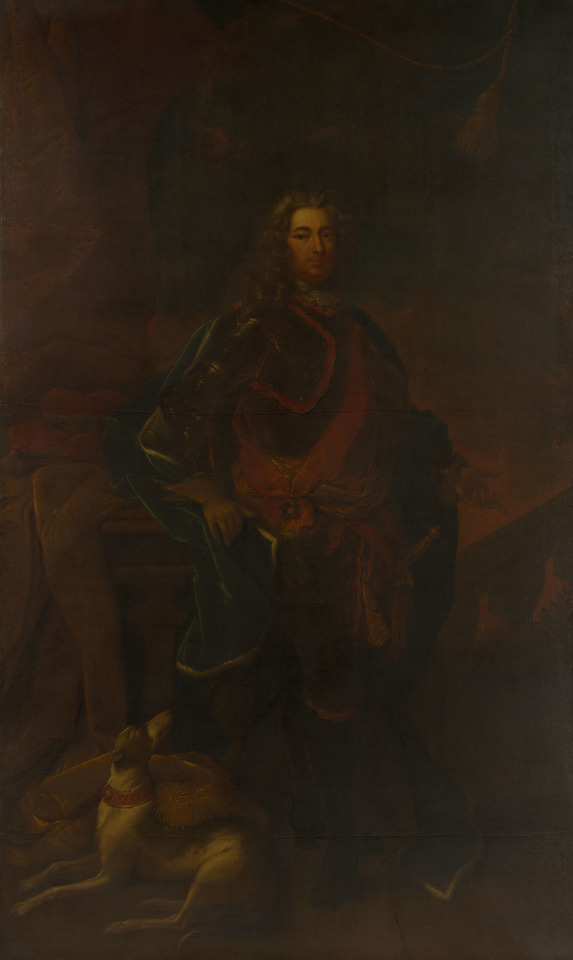
pictured above is a portrait of the Margrave of Brandenburg-Ansbach, from c. 1750
-------------------- ~ -------------------- ~ --------------------
SERIES - On this day August Edition: Karl Wilhelm Friedrich died on 3 August 1757.
-------------------- ~ -------------------- ~ --------------------
KARL WILHELM FRIEDRICH was born in 1712, in Ansbach, the capital of the Principality of Brandenburg-Ansbach. He was the eldest children of Wilhelm Friedrich, Margrave of Brandenburg-Ansbach and Princess Christiane Charlotte of Württenberg-Winnental.
The Margraviate of Brandenburg-Ansbach was a Free Imperial Principality in the Holy Roman Empire established in the late 14th century. It was ruled by the Brandenburg-Ansbach branch of the HOUSE OF HOHENZOLLERN, of which he was a member.
By 1729 he married his cousin FRIEDRIKE LUISE, a Princess of Prussia, and they had two sons (check the list below). She was one of the daughters of Friedrich Wilhelm I, King of Prussia and Princess Sophie Dorothea of Hanover.
In 1757 he succeeded his father as MARGRAVE OF BRANDENBURG-ANSBACH and ruled the Principality of Ansbach as an absolute Monarch leaving an enormous debt to his son and successor.
Aged 45, he died on 3 August 1757, at his residence in the town of Gunzenhausen (now in Bavaria).
-------------------- ~ -------------------- ~ --------------------
He was the penultimate Hohenzollern to rule as Margrave of Brandenburg-Ansbach as his son and successor Margrave Alexander did not have children, and sold the Margraviate in 1791 to his cousin Friedrich Wilhelm II, King of Prussia.
His son also inherited the Margraviate of Bayreuth in 1769, after another Hohenzollern branch became extinct. This Principality was also included in the 1791 sale and both Margraviates were annexed to the Kingdom of Prussia.
However as the Prussians were members of the main line of the House of Hohenzollern the territories continued in the Family hands.
-------------------- ~ -------------------- ~ --------------------
KARL WILHELM FRIEDRICH and his wife FRIEDRIKE LUISE had two children...
Margrave Karl Friedrich August of Brandenburg-Ansbach - died aged four; and
Alexander, Margrave of Brandenburg-Ansbach - husband first of Princess Friederike Caroline of Saxe-Coburg-Saalfeld and second of Lady Elizabeth Berkeley.
#karl wilhelm friedrich of brandenburg ansbach#margrave of brandenburg ansbach#hohenzollern#house of hohenzollern#german royals#german nobility#royal#royals#monarchy#monarchies#royal history#german history#european history#world history#history#history lover#18th century#frederick william i#frederick william ii#prussian royal family#history with laura
0 notes
Photo


I had a terrible terrible idea earlier today, so now I’m working on it.
Above is a painting from the UK’s National Portrait Gallery of Caroline Wilhelmina of Brandenburg-Ansbach. Below is the supplies I gathered (and little Wilma as well, for moral support) to create broaches that mimic the jeweled closings(?) going down the Queen Consort’s bodice. Let’s see how this goes!!!
This is part of a desire I have to add costume versions of historical jewels to elevate my own wardrobe. Big part of this, I’m thinking, will be those shoulder necklaces that dudes wear in a lot of paintings.
0 notes
Photo

History time!! Princess Caroline of Great Britain born on 10th June 1713 was the fourth child and third daughter of King George II of Great Britain and his wife Caroline of Ansbach. Princess Caroline was born at Herrenhausen Palace, Her father was George Augustus, Hereditary Prince of Hanover, the eldest son of George Louis, Elector of Hanover. Her mother was Caroline of Ansbach, daughter of Johann Friedrich, Margrave of Brandenburg-Ansbach. As a granddaughter of the Elector of Hanover, she was styled Princess Caroline of Hanover at birth. Under the Act of Settlement 1701, she was seventh in the line of succession to the British throne. She was baptised the day after her birth at Herrenhausen Palace. In 1714, Queen Anne died, and Caroline's grandfather became George I and her father Prince of Wales. At the age of one year, Caroline accompanied her mother and elder sisters, the Princesses Anne and Amelia, to Great Britain, and the family resided at St James's Palace, London. She was then styled as a Princess of Great Britain. According to popular belief, Caroline's unhappiness was due to her love for the married courtier Lord Hervey who was bisexual, may have had an affair with Caroline's elder brother, Prince Frederick, and was romantically linked with several ladies of the court as well. When Hervey died in 1743, Caroline retired to St. James's Palace for many years prior to her own death, accessible to only her family and closest friends. She also gave generously to charity throughout her remaining years. #princesscaroline #windsor #royalfamily #king #queen #prince #princess #duke #dutchess #princewilliam #dukeofcambridge #princesskate #dutchessofcambridge #princegeorge #princesscharlotte #princelouis #kensingtonpalace #clarencehouse #royalpost_24/7 #princeharry #dukeofsussex #archieharrison #princessmeghan #meganmarkle #dutchessofsussex #sussexroyal #princecharles #queenelizabeth #princephillip #windsorroyalfamily https://www.instagram.com/p/B-LdlirHzbv/?igshid=expmtmh6jwew
#princesscaroline#windsor#royalfamily#king#queen#prince#princess#duke#dutchess#princewilliam#dukeofcambridge#princesskate#dutchessofcambridge#princegeorge#princesscharlotte#princelouis#kensingtonpalace#clarencehouse#royalpost_24#princeharry#dukeofsussex#archieharrison#princessmeghan#meganmarkle#dutchessofsussex#sussexroyal#princecharles#queenelizabeth#princephillip#windsorroyalfamily
0 notes
Text
PRINCESS WILHELMINA CAROLINE of Brandenburg-Ansbach wrinkled her nose, and flipped her braid back over her shoulder. ‘Tumescent love slave’—is this some sort of French idiom? I can’t make heads or tails of it.
“Noise! It is an idiocy that Captain Bart threw in at the end, for he knew that he had to wind up the letter, but could not make out how, and became desperate, and lost his wits. Thank God he is more even-tempered in battle! Pray don’t dwell on that, my lady—”
“Why do you call me that? It’s weird. Stop it!”
“You are a born Princess, and very likely to be a Queen some day. I am a made Duchess.”
“But to me you are Aunt Eliza!”
“And to me you are my little squirrel. But the fact remains that you’re doomed to be a Princess whether you like it or not, and you’re going to have to marry someone.”
“As happened to my mother,” said Caroline, suddenly serious.
“Please do not forget that it happened twice. The second time around, she had to marry someone who was not suited for her. But the first time she was in a good marriage—to your father—and a perfectly wonderful Princess came of it.”
Caroline blushed at this, and looked at the floor of the carriage. A whip-pop sounded from outside, and it lurched forward. They’d been stalled, for a time, outside the north gate of Leipzig. Caroline’s eyes came up off the floor and gleamed in the light of the window. Eliza continued: “Why did your mother later end up in a bad marriage? Because things had gone against her—things she was powerless to do anything about, for the most part—and in the end she had very little choice in the matter. Now, why do you suppose I’m letting you read my personal correspondence from Captain Bart? To pass the time on the road to Leipzig? No, for if we only wished to make time pass, we could play cards. I show you these things because I am trying to teach you something.”
“What, exactly?”
It was a good question, and brought Eliza up short. For a few moments there was no sound in the carriage except what came into it from without: the clopping of shod hooves, the crashing of rims on road, the oinking and grunting of the suspension. A shadow enveloped them, then fell away aft: They’d passed through the gate into Leipzig.
“Pay attention, that’s all,” Eliza said. “Notice things. Connect what you’ve noticed. Connect it into a picture. Think of how the picture might be changed; and act to change it. Some of your acts may turn out to have been foolish, but others will reward you in surprising ways; and in the meantime, simply by being active instead of passive, you have a kind of immunity that’s hard to explain—”
“Uncle Gottfried says, ‘Whatever acts cannot be destroyed.’ ”
“The Doctor means that in a fairly narrow and technical metaphysical sense,” Eliza said, “but it’s not the worst motto you could adopt.”
~The Confusion, from Neal Stephenson’s Baroque Cycle
1 note
·
View note